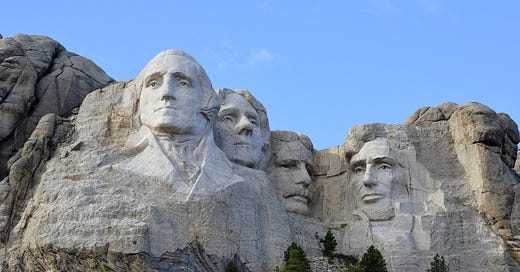Visiting Mount Rushmore: A Journey Through Time
Mount Rushmore: A Monument to American History and Ingenuity
Nestled in the picturesque Black Hills of South Dakota, Mount Rushmore stands as a symbol of American history, democracy, and innovation. Carved into the granite face of the mountain, the monumental sculpture depicts the faces of four iconic American presidents: George Washington, Thomas Jefferson, Theodore Roosevelt, and Abraham Lincoln. Let's delve into the fascinating story behind this remarkable national treasure.
Commissioned by historian Doane Robinson in the early 1920s, Mount Rushmore was initially conceived as a project to attract tourists to South Dakota. Robinson's vision evolved into a grand tribute to American democracy, and he enlisted the expertise of sculptor Gutzon Borglum to bring his idea to life.
Borglum, along with a team of skilled workers, began the monumental task of sculpting the faces of the presidents into the granite cliffside in 1927. Over the course of 14 years, using dynamite, jackhammers, and other intricate tools, they meticulously carved the 60-foot-high faces into the mountain, enduring harsh weather conditions and logistical challenges along the way.
Each president was chosen to represent a different facet of American history and values. George Washington, the first president and a founding father, symbolizes the birth of the nation. Thomas Jefferson, author of the Declaration of Independence, represents the expansion of American territory through the Louisiana Purchase. Theodore Roosevelt, a conservationist and advocate for national parks, embodies the spirit of progress and conservation. Abraham Lincoln, the Great Emancipator, stands as a beacon of freedom and unity during a time of national crisis.
Mount Rushmore was officially dedicated on October 31, 1941, and has since become one of the most iconic symbols of American identity. Millions of visitors from around the world flock to the site each year to marvel at the grandeur of the sculpture and to reflect on the values and ideals it represents.
In addition to its historical significance, Mount Rushmore also serves as a testament to human ingenuity and perseverance. The sheer scale of the project, coupled with the precision required to carve such intricate details into solid rock, is a testament to the skill and determination of the sculptors and laborers involved.
Today, Mount Rushmore remains a cherished national monument and a source of inspiration for generations of Americans. It stands as a reminder of the principles upon which the nation was founded and serves as a tribute to the leaders who have shaped its history. As visitors gaze upon the faces of Washington, Jefferson, Roosevelt, and Lincoln, they are reminded of the timeless ideals of freedom, democracy, and unity that continue to define the American spirit.





